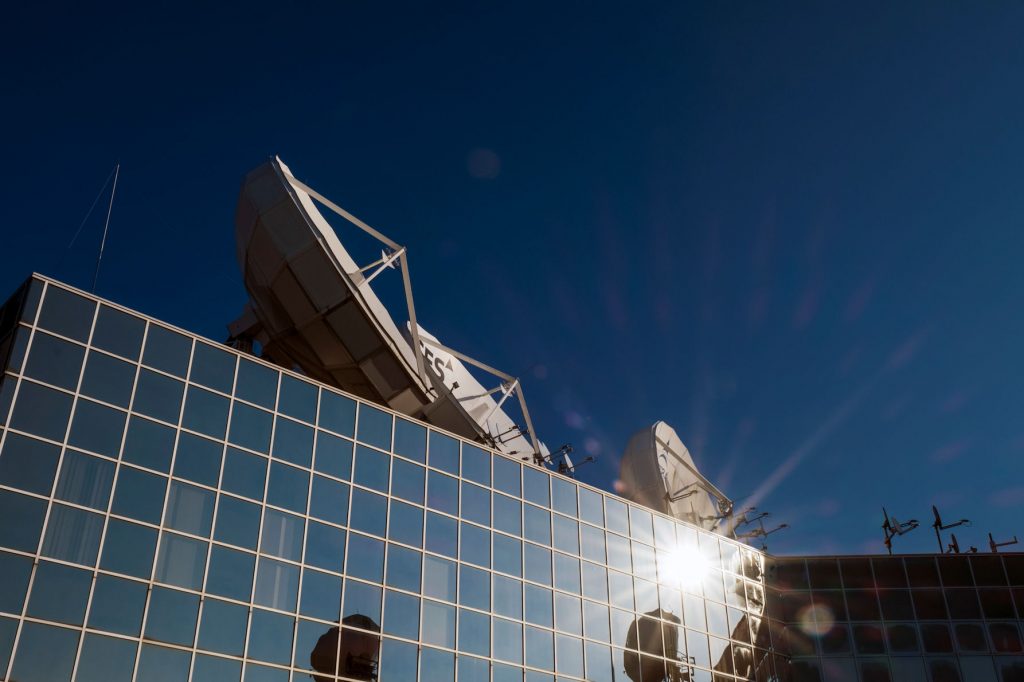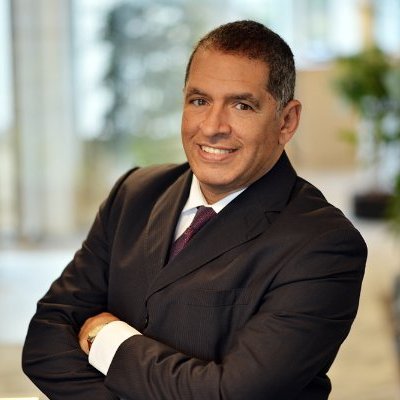
SpaceWatch Middle East conducted a series of interviews during the International Broadcast Convention 2016 in Amsterdam earlier this month. The second of these interviews is with Hussein Oteifa, Commercial General Manager for the Middle East at SES.
SES is one of the most active satellite operators in the Middle East region, a very contested market. What is your current growth strategy in the region or in the world? What are the main territorial markets and industry segments you see in the upcoming years?
It has been an interesting time for the satellite services in the region and also all around the world. According to NSR, there are U.S.$5 billion in additional satellite capacity revenues to be captured by 2020. The primary market growth will be led by the mobility market. The reason why the data market is also growing is because of the demand of being connected all the time. We see also growth in the video market and the reasons are demand for HD and also the demand for local and varied channels, and also, the gradual shift to UHD.
As a company and also at a global level we see different growth opportunities in our four verticals: Mobility, Enterprise, Government, and Video.
In the mobility vertical, we see a huge growth potential. Today, people are constantly on the go and need connectivity in the air and on the sea. Passengers are using multiple devices and applications that need connectivity wherever they are. Currently we already serve four major inflight service providers (Gogo, Global Eagle Entertainment, Thales and Panasonic). Between the years 2015 and 2025, we see huge growth with connected planes. From 2,695 connected planes in 2015 to 25,929 connected planes in 2025. This is a tenfold growth we are seeing! And in the maritime market, we are serving some of the biggest maritime global resellers in the industry – Marlink, NSSL, KVH. In maritime, we see the similar trend in connected ships like in the planes, with the number of connected ships expected to grow from 12,218 in 2015 to 32,659 in 2025.
In the Enterprise segment, we see growth through many different drivers. One of them, connecting the unconnected, is one of the key growth areas especially in the banking and oil industries. One very important business opportunity for us is the shift from 2G to 3G/4G and LTE. Another interesting area for growth is to capture the IoT opportunity. By 2021, there will be 28 billion devices that need connectivity to run various applications. Digitalization is on our minds as well. We need to help countries and companies in this digital evolution – whether it’s e-learning, e-health or digital work.
In government vertical, we now serve 57 governments globally. In the future, we see that the growth is coming from new government markets, from APAC or Africa as an example.
We are very pleased with the achievements in our video vertical. We serve over 500 operators and broadcasters, carry 50 TV platforms and deliver over 7,400 TV channels to 317 million household. But we don’t stop there. We are growing because of the demand for higher quality viewing and also, the emerging markets are bringing a huge growth opportunity for us in new video platforms.
In the Middle East, our main focus is how we can leverage our expertise as a global satellite operator to deliver connectivity to our customers. In fact, we have launched SES Plus, a new satellite data network to tackle the evolving needs of the market. In the Middle East region, different countries have different satellite connectivity demands. The demand for satellite connectivity in Saudi Arabia remains strong due to its continuous requirements for banking networks, e-learning and surveillance services whereas in the UAE, it’s broadband services and maritime connectivity.
What, if any, are the most pressing regulatory and/or policy issues that you have to contend with in the Middle East market?
Every market is different from one another, of course, and in the Middle East we have certain policies we need to take into consideration. For example, the capacity that is provided for broadband connectivity needs to have its own hub inside the country for security reasons.

What are your company highlights at IBC 2016?
There were many company highlights at IBC for us. One of them was the SES demo of virtual reality 360. It provided a 360 degree, fully immersive experience for the audience. It was absolutely magnificent. Another highlight for us was announcing the winners for our dish design competition. Through this design competition, we wanted to showcase that useful can be beautiful. The winning design “Dragon” was designed by Shudong Deng, a Chinese student at Imperial College London. At the IBC, we also presented MX1’s full suite of next-generation video and media services into its new innovative open media service platform – MX1 360. It enables leading media businesses to manage, deliver and monetise content from a single, hybrid, cloud-based and on-premises service platform.
Do you see upcoming LEO constellations as a threat for SES/O3B and the established satellite operators – or is that your future?
Our view towards LEO is not simply to ask whether it’s interesting or not. Are we looking at the LEO constellation in our strategic thinking at SES Group? The answer is yes. In 2014, it held our attention, especially that we must keep an open mind and analytical approach. The possibility of deploying additional technology to provide better services requires reference to four criteria, indivisible, concerning the technical reliability, the business model, the appropriate context of regulation frameworks and profitability.
It is especially important to be patient. Remember that with the O3b Networks constellation SES decided to acquire it six and a half years after the initial decision to invest in development, alongside global players such as Google and Liberty.
SpaceWatch Middle East thanks Hussein Oteifa, Commercial General Manager, Middle East, at SES for the interview.
Original published at: http://spacewatchme.com/2016/09/the-spacewatchme-ibc-2016-interviews-hussein-oteifa-of-ses/
 SpaceWatch.Global An independent perspective on space
SpaceWatch.Global An independent perspective on space

